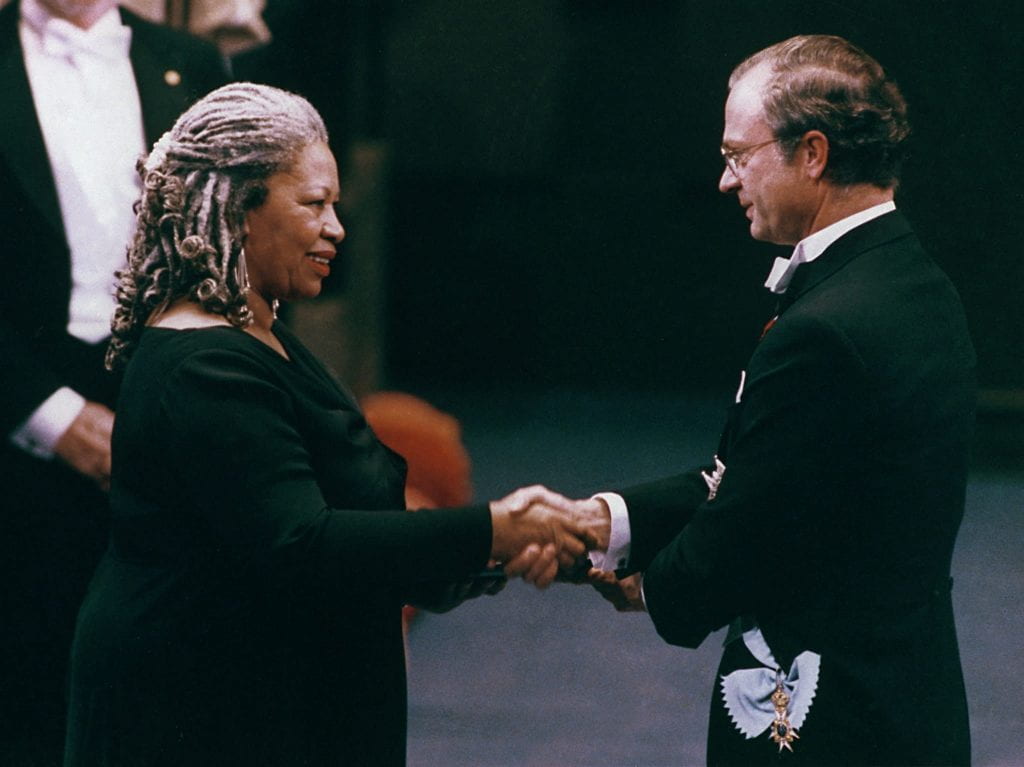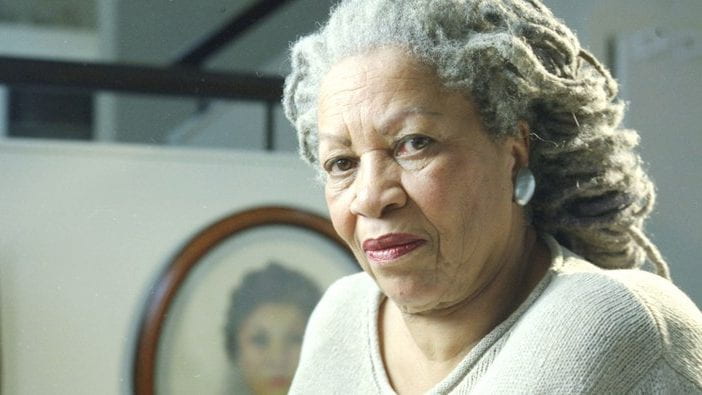By Editor Spencer Weinreich
I read the news today, oh boy. As Shakespeare’s Richard II almost said,
For God’s sake, let us sit upon the ground
And tell sad stories of the death of queens.
The world mourns the loss of its greatest storyteller today, the incomparable Toni Morrison. Storyteller, and historian—for they amount to the same thing. A. J. P. Taylor once reflected on the many languages in which the word for “story” and the word for “history” are one and the same: historia, storia, histoire, Geschichte.
It would save much trouble if we had the same coincidence of words in English. Then perhaps we should not be ashamed to admit that history is at bottom simply a form of story-telling.
Taylor, Essays in English History, 9
The tale is all in the telling, of course, even (or especially) when the tale is a history. As Taylor suggests, every historian, whether they like it or not, is a storyteller, with choices to make that are narrative and stylistic as well as analytic and forensic. Indeed, Hayden White’s Metahistory famously challenged any such distinction, arguing that the intellectual work of historiography is quintessentially narrative. For White, it is a historian’s choice of “emplotment”—is the story a romance, a comedy, a tragedy, or a satire?—that guides the arguments they make and the conclusions they draw. The medium is the message.

In her Nobel Prize Lecture of 1993, Morrison radically affirmed this unity:
Oppressive language does more than represent violence; it is violence; does more than represent the limits of knowledge; it limits knowledge.
The Lecture is a magnificent reflection on the nature of language and the nature of power, together with the shared work of making meaning. Any writer, anyone who uses language, should put their hands to the tapestry Morrison weaves with her words. Just as Taylor insisted that “the original task of the historian is to answer the child’s question: ‘What happened next?'” (9), so I posit that the opening words of Morrison’s Nobel Lecture are in spirit the opening words of every work of history ever written: “Once upon a time…”
Yet if the historian is willing to borrow the storyteller’s mantle, it would be churlish not to return the hospitality. I have no hesitation in adding “historian” to Morrison’s many achievements and accolades. The publicity material for her final novel, God Help the Child (2015), a searing exploration of childhood trauma, declared it “the first book by Toni Morrison to be set in our current moment.” And so it proves: a glance back at her oeuvre reveals a singular preoccupation with the past, from her debut novel, The Bluest Eye (1970), set in 1941, to her magnum opus, Beloved (1987), set just after the American Civil War, to her penultimate book, Home (2012), which takes place in the 1950s. Beloved is dedicated to “Sixty Million and More,” the countless victims of the Atlantic Slave Trade, whose agonies and unfathomable experiences the novel unflinchingly chronicles.

True, Beloved is a work of fiction, albeit based on the true story of Margaret Garner, an escaped slave who killed her two-year-old daughter rather than permit her to be returned to the South as a slave. And historical fiction and a work of history are not the same thing, though Morrison undertook immense historical research to write the book and even more to write the libretto for the opera Margaret Garner (2005). She delivered keynote remarks at the Princeton & Slavery Project Symposium in November 2017 that speak to her own sweeping historical vision, her keen-eyed analytical powers, and her deep engagement with the work of academic historians.
More to the point, the monographs and journal articles with which we are most comfortable constitute only one form of historical work. Morrison’s close friend and fellow visionary talent James Baldwin picked out this narrowness when writing about jazz.
That music is produced by, and bears witness to, one of the most obscene adventures in the history of mankind. It is a music which creates, as what we call History cannot sum up the courage to do, the response to that absolutely universal question: Who am I? What am I doing here?
Baldwin, The Cross of Redemption, 150–51
But of late history has been growing braver, or at least certain historians are, and we need not shy away from these questions anymore. Thus, for example, Sarah Haley, whose pathbreaking monograph No Mercy Here: Gender, Punishment, and the Making of Jim Crow Modernity (2016) marshals blues music, prison songs, and poetry to imagine the experiences of black women under Jim Crow. Vitally, Haley does more than mine these works as primary sources or ego documents, she vindicates their writers and singers as historians and interpreters of their own experiences. The same is true for those, like Morrison, at a farther remove from the events they envision. Nina Simone’s haunting “Four Women,” written in 1966, is nevertheless, as Thulani Davis put it, “an instantly accessible analysis of the damning legacy of slavery, that made iconographic the real women we knew and would become” (2003).
One of our finest living historians, Peter Brown, wrote,
In the middle of an exacting history course, it takes a high degree of moral courage to resist one’s own conscience: to take time off; to let the imagination run; to give serious attention to reading books that widen our sympathies, that train us to imagine with greater precision what it is like to be human in situations very different from our own. It is essential to take that risk.
Brown, Society and the Holy in Late Antiquity, 4
An argument for the benefits of reading, listening, viewing, and learning widely, to be sure, but also a broader vision of what it means to do history. Morrison’s evocations of the horrors of the Middle Passage, the wilderness of the colonial Chesapeake, the ordinary and extraordinary lives of African Americans across the centuries are works of genius, not simply as masterpieces of literary craft, but also as a virtuosic historiography of the United States’s past.
“To imagine with greater precision what it is like to be human in situations very different from our own” is the very essence of the historical imagination and it is the work to which Morrison’s words call us. And we are all called, for the task is universal. As her Nobel Lecture concluded of the project that is language, “Look. How lovely it is, this thing we have done—together.”



